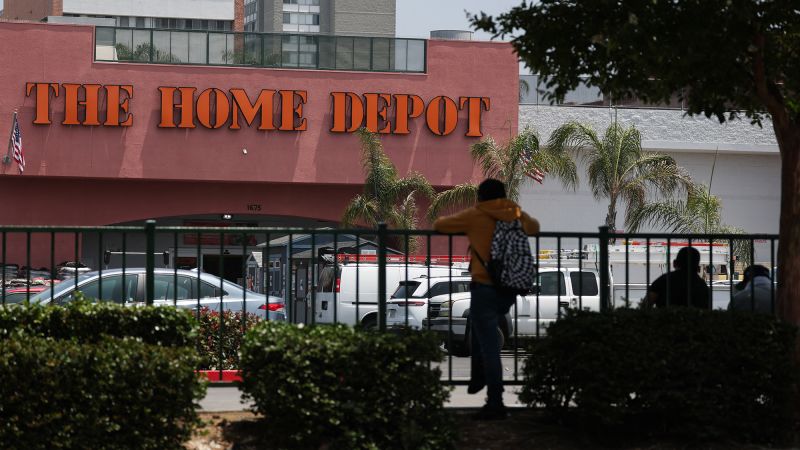The seasonal rhythm of summer typically transforms Home Depot parking lots into bustling hubs for immigrant day laborers, who secure temporary jobs as roofers, painters, and various construction workers. However, this year, something unsettling disrupts this routine; the familiar groups of legal and undocumented workers are mysteriously absent from these once-crowded locations. The change has been particularly evident in key urban centers such as Los Angeles, New York City, and Baltimore, where scores of day laborers have faced arrest in recent months, drawing attention to the increasing tensions surrounding immigration policy in the United States.
The legal actions taken against day laborers stem from directives issued by White House officials like Stephen Miller, who, according to reports from the Wall Street Journal, advocated targeting these workers in a larger deportation initiative spearheaded by the Trump administration. The repercussions of such policies are acutely felt among the immigrant workforce. One undocumented worker, who has spent a decade in the U.S., expressed his fears to CNN, saying he is behind on rent and apprehensive of the prospect of being detained while waiting for work outside the local Home Depot. His reluctance to seek employment during what should be the most lucrative time of the year signifies a significant shift in the dynamics of labor within immigrant communities.
Home Depot, the fifth-largest retail chain in the U.S., finds itself entwined in a larger narrative of immigration and labor economics, having formed an informal yet critical nexus with day laborers, or jornaleros, as they look for intermittent work. As Home Depot expanded across the nation starting in the 1980s, parking lots became informal hiring centers for day laborers predominantly hailing from Mexico and South America. This arrangement initially appeared mutually beneficial: Home Depot catered to contractors and homeowners seeking labor while providing day laborers a location to connect with potential employers.
However, recent developments have led to a rupture in these complex ties. The uncertainties surrounding immigration enforcement contribute to a hostile atmosphere for day laborers, who feel exposed and unprotected in their pursuits. Advocacy groups like Resistencia en Acción NJ echo these sentiments, revealing the vulnerability that comes with being in the open, risking encounters with immigration authorities.
Despite Home Depot’s claims of ignorance regarding ICE operations, the dynamics inherent in its status as a primary hiring site for day laborers hinge on larger socio-economic forces. Nik Theodore, an urban policy professor, suggests that while Home Depot might appear to be an innocent bystander, the company’s growth contributed significantly to the conditions that perpetuate day labor practices. Day labor is increasingly recognized as a symbol of a fractured immigration system, provoking backlash from anti-immigration groups throughout U.S. history.
Despite a lack of comprehensive national statistics, previous studies hint at a significant population of day laborers reliant on Home Depot. For instance, a 2006 study estimated around 117,000 day laborers congregated at home improvement retailers nationwide. The labor force continues to grow, especially as an increasingly flexible, low-wage workforce becomes necessary for the construction industry, which has seen substantial shifts over the past few decades.
The intersection of day labor and Home Depot leads to challenging questions on worker protections and public safety. Some cities have implemented regulations banning solicitation on public streets, while others view day laborers as an integral aspect of business practices tied to Home Depot. Community groups call for the establishment of dedicated zones for day laborers in collaboration with Home Depot.
As the COVID-19 pandemic takes its toll on labor dynamics, further concerns about the exploitation of undocumented workers arise. Contracts and job rates are often poorly defined, allowing contractors to take advantage of day laborers. Amid increasing uncertainties and mounting fear, a New Jersey laborer reflects on the difficult juxtaposition of seeking better-paying work with the persistent risks attached to it, revealing the ongoing struggles faced by labor cohorts expecting the worst of an already precarious economic system.
Ultimately, the narratives shared by day laborers and the structural challenges posed by policies make it clear that the complexities surrounding immigration, labor, and economic opportunity in America are ongoing. They present a compelling challenge not only for day laborers but also for organizations like Home Depot, which must navigate community expectations alongside evolving labor landscapes.











